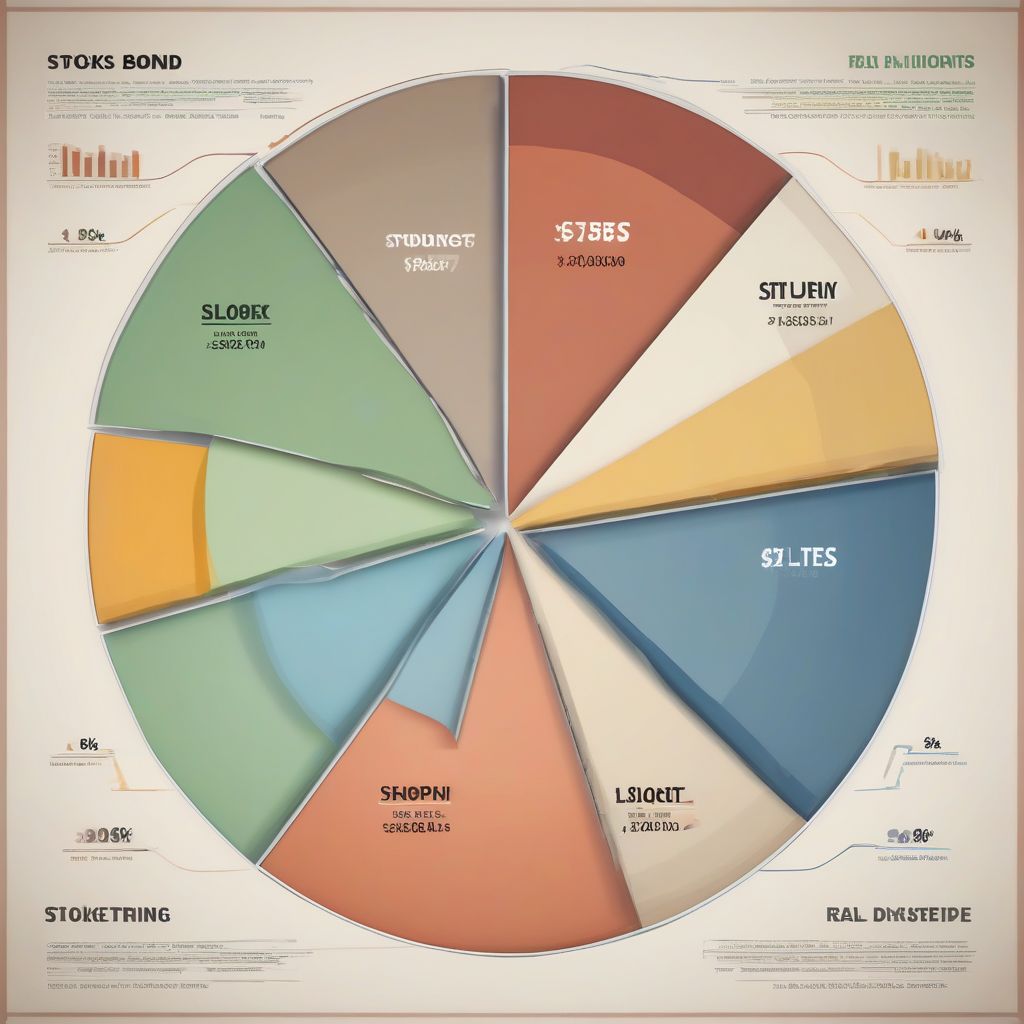Do you dream of financial freedom? A diversified investment portfolio isn’t just for Wall Street gurus; it’s the cornerstone of a secure financial future for everyone. Like a well-balanced meal, a diversified portfolio ensures you’re not putting all your eggs in one basket, protecting you from market fluctuations and maximizing your potential for growth. So, how do you build one? Let’s dive in.
Understanding Diversification
Diversification is a risk management strategy that mixes a wide variety of investments within a portfolio. The goal is to limit exposure to any single asset or risk. Think of it like this: if you only invest in one company and that company fails, you lose everything. But if you spread your investments across different companies, industries, and asset classes, the impact of one failing investment is minimized.
Why is Diversification Important?
Simply put, diversification helps to minimize losses and maximize returns over the long term. It’s not about avoiding risk altogether, but about managing it intelligently.
- Reduces Volatility: Diversification smooths out the ups and downs of the market. When one investment is down, another might be up, balancing out your overall portfolio performance.
- Protects Against Market Downturns: No one can predict the future. Diversification helps shield your portfolio from unexpected market crashes or sector-specific downturns.
- Enhances Growth Potential: By investing in a variety of asset classes, you can capture growth opportunities across different market segments.
Building Your Diversified Portfolio: A Step-by-Step Guide
Creating a diversified portfolio isn’t as complicated as it sounds. Here’s a practical guide to get you started:
1. Define Your Investment Goals and Risk Tolerance
What are you saving for? Retirement? A down payment on a house? Your goals will influence your investment timeline and risk tolerance. If you’re young and saving for retirement decades away, you can afford to take on more risk. If you’re nearing retirement, you’ll likely want a more conservative approach.
2. Choose Your Asset Classes
Asset allocation is the key to diversification. Here are the main asset classes to consider:
- Stocks: Represent ownership in a company. They offer higher growth potential but also carry higher risk.
- Bonds: Essentially loans to governments or corporations. They offer lower returns but are generally less volatile than stocks.
- Real Estate: Includes properties like houses, apartments, or commercial buildings. Can provide rental income and potential appreciation.
- Commodities: Raw materials like gold, oil, and agricultural products. Can act as a hedge against inflation.
- Cash and Cash Equivalents: Highly liquid assets like savings accounts and money market funds. Provide stability but limited growth potential.
3. Diversify Within Asset Classes
Don’t just buy stock in one company; invest in a variety of companies across different sectors. Similarly, diversify your bond holdings by maturity date and issuer.
4. Consider Index Funds and ETFs
Index funds and Exchange-Traded Funds (ETFs) offer instant diversification by tracking a specific market index, such as the S&P 500. They are a cost-effective way to gain exposure to a broad range of investments.
5. Rebalance Your Portfolio Regularly
Over time, some investments will perform better than others, causing your portfolio to drift from its target asset allocation. Rebalancing involves selling some of your winners and buying more of your losers to bring your portfolio back into alignment with your desired risk level. This disciplined approach forces you to “buy low and sell high.”
Common Mistakes to Avoid
- Over-Diversification: Spreading your investments too thinly can dilute your returns.
- Chasing Performance: Don’t jump into hot investments based on past performance. Focus on a long-term strategy.
- Ignoring Fees: High fees can eat into your returns. Choose low-cost investment options.
- Emotional Investing: Don’t let fear or greed dictate your investment decisions. Stick to your plan.
 Diversified Investment Portfolio
Diversified Investment Portfolio
Advanced Diversification Strategies
For those seeking more sophisticated approaches, consider:
International Diversification:
Investing in international markets can provide access to growth opportunities outside your home country and further reduce risk.
Factor-Based Investing:
This strategy focuses on specific characteristics of investments, such as value, size, and momentum, to potentially enhance returns.
Alternative Investments:
These include assets like hedge funds, private equity, and venture capital. They can offer higher returns but also carry higher risks and are generally less liquid.
“Investing should be more like watching paint dry or watching grass grow. If you want excitement, take $800 and go to Las Vegas.” – Paul Samuelson
Conclusion
Building a diversified investment portfolio is a crucial step towards achieving your financial goals. By spreading your investments across different asset classes and regularly rebalancing your portfolio, you can minimize risk and maximize your long-term returns. Remember to define your investment goals, understand your risk tolerance, and stay disciplined. Don’t be afraid to seek professional advice if needed. What steps will you take today to build a more diversified portfolio? Share your thoughts in the comments below!



